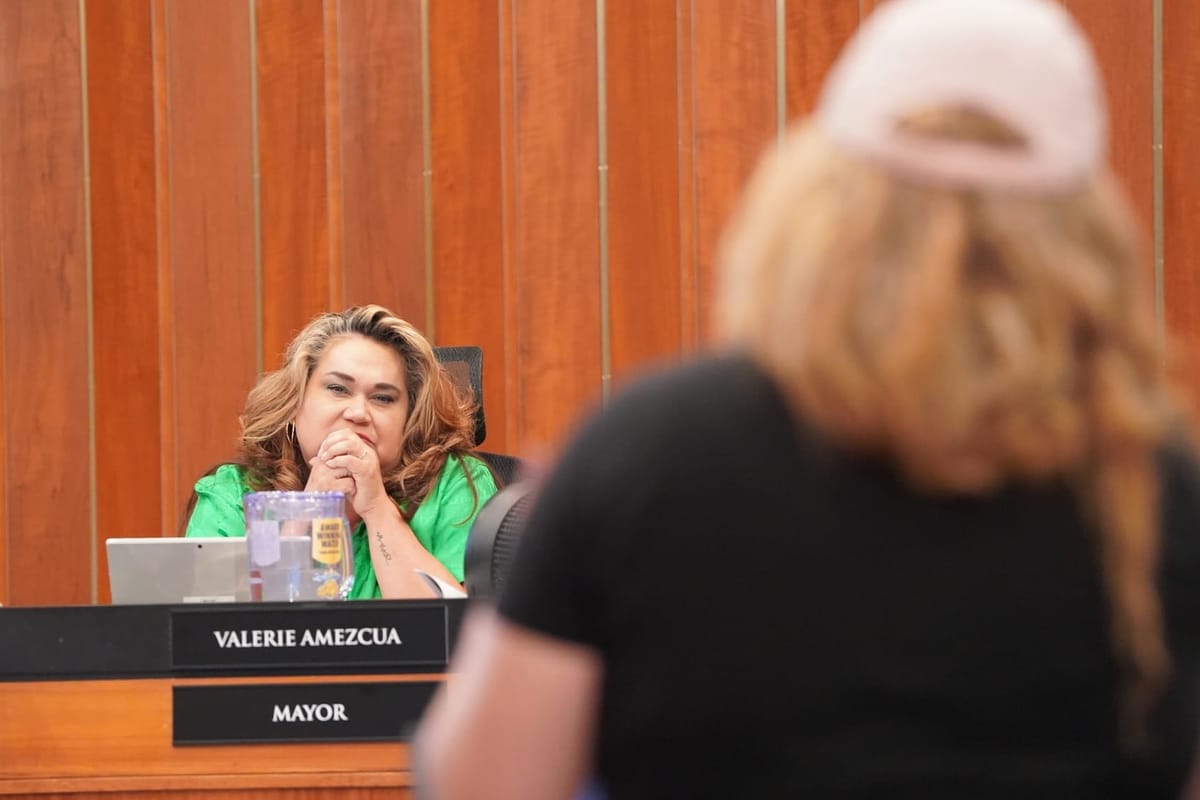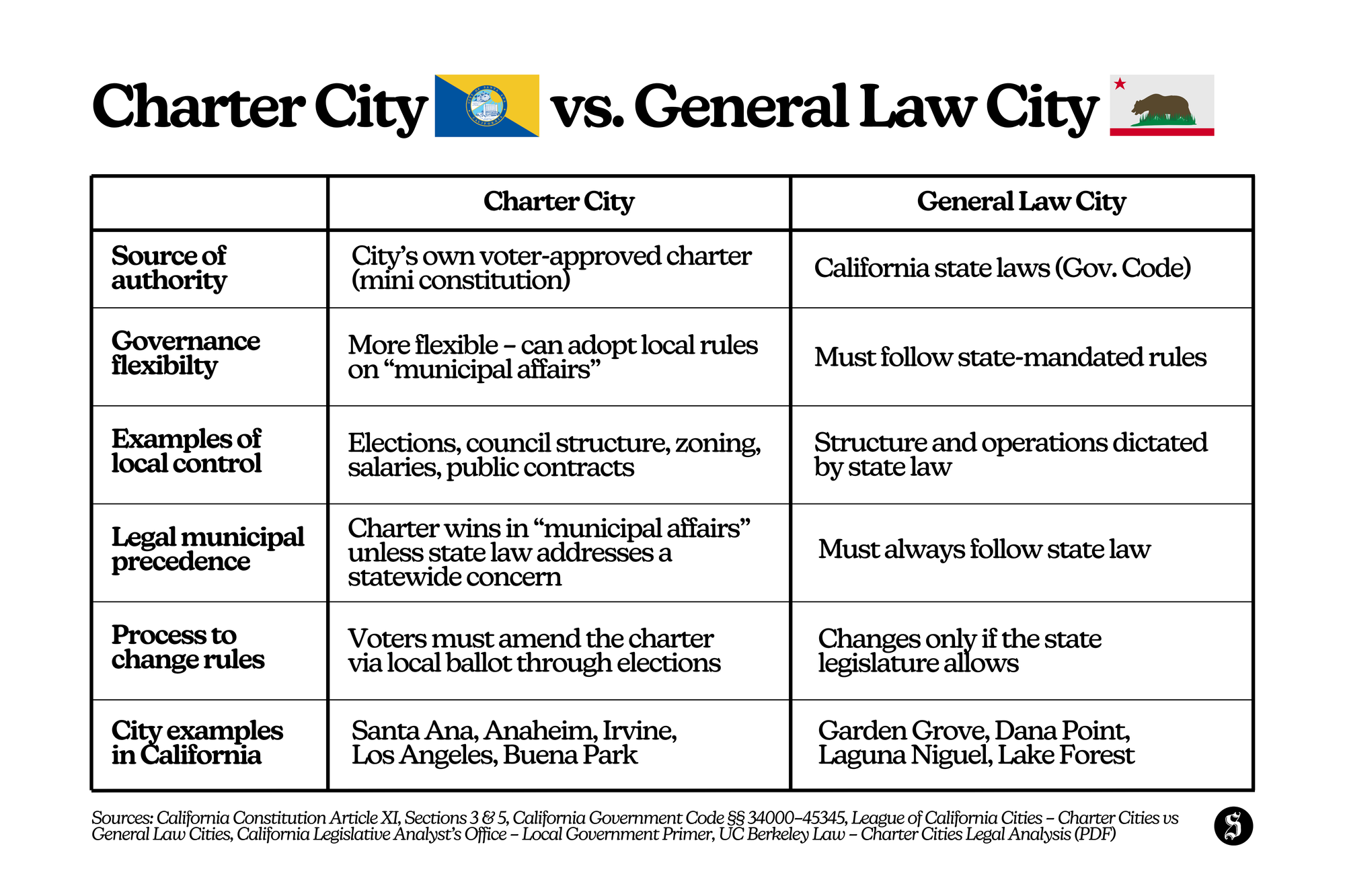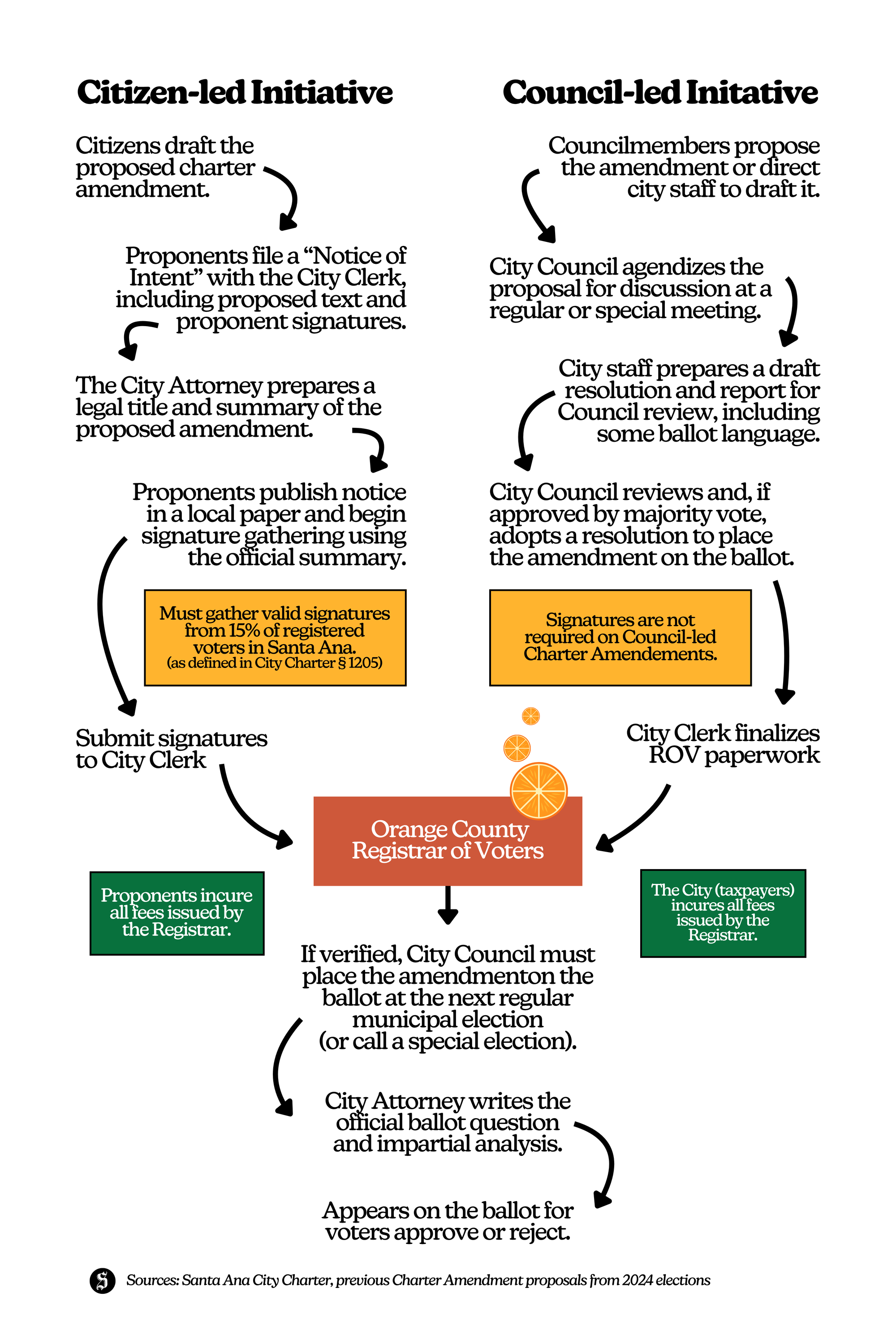Bass signed an executive order. Here's why Amezcua can't do that—and what it would take to change it
Amezcua faced public criticism for not demanding the removal of ICE and the National Guard from Santa Ana. However, according to the City Attorney's office, the City Charter does not grant the authority to issue such an order.

During the July 1st City Council meeting, public commenters flamed Mayor Valerie Amezcua for not issuing a formal memorandum denouncing the presence of ICE and the National Guard in Santa Ana—similar to Los Angeles Mayor Karen Bass, who recently signed an executive order supporting immigrant communities and condemning ICE raids.
Santa Ana's City Council attempted to establish a relief fund for families impacted by ICE activity, but the effort failed to pass amid disunity amid a brass cacophony of conflicting voices.
In response, City Attorney Sonia Carvalho stepped in, temporarily pausing public comment to clarify the legal constraints of the city's governing document—the City Charter, often referred to as Santa Ana’s version of the Constitution, in which is ruled by the People, not the elected.
City Attorney Sonia Carvalho explaining the difference between LA and Santa Ana during a council meeting on July 1, 2025. (City of Santa Ana YouTube Channel)
"Our credibility is our most important asset in responding to criticism and conflict in our community," said Carvalho. "I can tell you that without a doubt, the Mayor of the City of Santa Ana does not have the power that many of you are saying she has."
She went on to explain Los Angeles' form of government compared to ours, using terms like “mayor–council” and “council–manager.”
But what do those terms mean?
Don't worry, If you are lost, we'll help you understand what all this legal jargon means. Scroll!
What are the similarities and differences between Santa Ana and Los Angeles?

Aside from population, size and vastly diverse districts, Santa Ana and Los Angeles both have charters, Councilmembers, and a Mayor elected by the People. However our systems of governance differ significantly.
Los Angeles operates under a “mayor–council” system, adopted in 1999 by voter approval, which grants their Mayor expanded administrative powers—such as hiring, firing, vetos, and issuing executive directives—even without unanimous support from the City Council or staff.
A perfect example of this was earlier this year where Bass took executive authority to fire former Fire Chief Kristin Crowley amidst the department's response to wildfires across Los Angeles in January.
Amezcua cannot do that, even under public pressure. Why?
Santa Ana, by contrast, follows a “council–manager” model, meaning executive authority lies with the City Manager, not the Mayor. Any official action—such as issuing a memorandum condemning ICE—requires the consensus or direction of the full Council before the City Manager can act on the city's behalf. In this system, the Mayor holds the same voting power as any other Councilmember.
How did L.A. give more power to the Mayor? 🗳️
In the 1990s, Los Angeles faced growing frustration over its fragmented and inefficient city government. Power was spread across elected officials and independent commissions, making accountability murky and action slow. Calls for reform intensified amid rising civic disengagement and even talk of secession from the San Fernando Valley.
To address this, two competing charter reform commissions — one elected by voters, one appointed by the City Council — were formed in 1997. Despite early conflict, the commissions eventually unified their proposals, with support from then-Mayor Richard Riordan, who advocated for a stronger executive branch.
Their efforts culminated in Proposition F, a citywide ballot measure in June 1999, which voters approved by a 60–40 margin. The new charter, effective July 1, 2000, gave the Mayor significantly more power, including the authority to appoint and remove department heads, greater budget control, and a more centralized executive role.
The Council had been in discussions about developing an ICE notification system, but those talks were quickly tempered in June by a (threatening) letter previously sent by U.S. Central District Court Attorney Bill Essayli (the Council voted 5-2 in closed session to suspend further action on the system). The Council instead unanimously approved a resolution on July 1st, requesting help from Congressmember Lou Correa and other federal representatives in pursuing the removal of ICE and the National Guard from Santa Ana, all while filing a Freedom of Information Act request for data regarding immigration arrests.
Carvalho's open door policy
The Santanero accepted Carvalho’s invitation to meet with the community following her brief explanation of the differences between Santa Ana and Los Angeles—and how residents could pursue changes to the City Charter if they wished.
According to disclosures at Tuesday’s city council meeting, only two individuals made such a request, and The Santanero has been the only one who followed through thus far.
So. How can Santaneros change the Charter?
There are two ways to change the Charter: either the People do it or majority vote by the Council. However, they both end up on our ballots to be voted on.

Council-led Charter amendment route
Most amendments to the Charter would require legal research by City staff to report back to the Council so that they make an informed decision and isn't always free. Once the Council can come to a consensus, City staff, mainly the City Attorney, will draft an election question to place on the ballot, such as asking voters if they wish to grant the mayor more power or not.
All ballot questions placed on the ballot initiated the City is paid in full by Santa Ana taxpayers, including Council-led charter amendments and special elections.
Citizen-led Charter amendment route
Another way would for the People to come to City Hall to show their "intent to file" by placing a ballot question.
The process would require financial backing and petition signed by the People and once enough signatures have been collected, it is forwarded to the City Clerk and then to Registrar of Voters to be verified. Once checked off, the City Attorney drafts the final way the question will appear before Santanero voters.
The proponent's sponsor or political group would have to come up with the money to pay the ROV's bill to pay the ballot fees, which can cost up to $500,000 per ballot question. Taxpayers do not front the bill for citizen-led charter amendments.
Hypothetically, the ballot question would ask voters whether they want to grant the Mayor—whoever holds the office—greater administrative power, and whether they’re willing to shift the city’s structure from a “council–manager” model to a “mayor–council” form of government.
Below are some notorious Q&A's for educational purposes. This article, including graphics and answers embedded are not legal advice.
What are the consequences of granting more power to a mayor?
Like all consequences, there's good and bad. However, since this is in regard to politics, The Santanero will leave it up to the reader to decide which ones are good and which ones are bad.
Empowering the Mayor could lead to faster action, cohesive strategy, and clearer accountability, and may risk concentrating power, diluting community input, and creating executive-legislative gridlock if not balanced by effective Council oversight. It would also likely cost more taxpayer money.
A change in governance could mean the Mayoral seat having more weight in votes on the dais, setting an unofficial imbalance to other Council seats. Currently, the entire Council and the Mayor sit as equals (one vote each).
It would also hold the Mayor to a figurative pedestal, where the Mayor is the face of the City (while everyone else is just kinda there). If the Mayor underperforms, public criticism would technically carry more weight, as greater authority naturally brings greater accountability.
Santa Ana does not have one face, it has six duly elected and sworn Councilmembers and one Mayor, with those seven working with the City Manager, the City Clerk, and the City Attorney to run the city the way the People want it to be.
Apologies for all the "the's."
Can the Mayor or Council fire an officer?
No, under the Charter, neither the Mayor or any Councilmember can hire, fire, discipline, promote, assign, or direct an officer or any city staff member except for three people: the City Manager, the City Clerk, and City Attorney.
Who can fire an officer?
Santa Ana Police Chief Robert Rodriguez can exercise the right to execute discipline on any officer after a full investigation into the officer's allegations have concluded and been sustained beyond a reasonable doubt (legal speak for they have more than enough evidence to prove the officer did wrong).
If Rodriguez imposes discipline on an officer, it is the officer's right to appeal and could go one of two ways: appeal or lawsuit.
The person above the Police Chief is the City Manager under the form of government the City of Santa Ana has (council-manager). So, only those are technically allow to fire an officer, but officers are allowed to appeal or file a wrongful termination lawsuit against the city if any aspect of the investigation or case was done wrong (which is a conversation for a separate article).
Can the Mayor tell ICE/National Guard to get out of Santa Ana?
The Mayor of Santa Ana, or any elected official for that matter, can personally say “ICE and/or the National Guard should leave” under First Amendment protections, but they cannot officially order it using city letterhead, logos, or in a professional capacity without overstepping the City Charter.
Additionally, legal experts could argue that elected officials are effectively always operating in a professional capacity, even when posting from personal social media accounts—especially since most officials maintain both campaign-related profiles and personal accounts that don’t explicitly reference city business.
Santa Ana’s council-manager system limits the Mayor’s authority to symbolic leadership — actual directives require a majority vote from the City Council and implementation by the City Manager. If the Mayor issues such a command formally, it could be seen as a charter violation or trigger legal and political consequences and even more lawsuits.
This has been a free educational article presented by The Santanero :)





